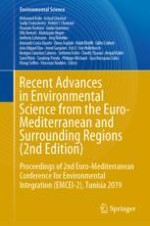2021 | OriginalPaper | Chapter
Optimization of Pectin Extraction from Orange Peels and Its Anti-proliferative Potential on HEp2 Cancer Cells
Authors : Hadjira Hamai-Amara, Khalida Abdoun-Ouallouche, Assia Nacer-khodja, Karima Abdelhafid, Abdelouafi Benmouloud, Assia Djefal-Kerrar
Published in: Recent Advances in Environmental Science from the Euro-Mediterranean and Surrounding Regions (2nd Edition)
Publisher: Springer International Publishing
Activate our intelligent search to find suitable subject content or patents.
Select sections of text to find matching patents with Artificial Intelligence. powered by
Select sections of text to find additional relevant content using AI-assisted search. powered by
